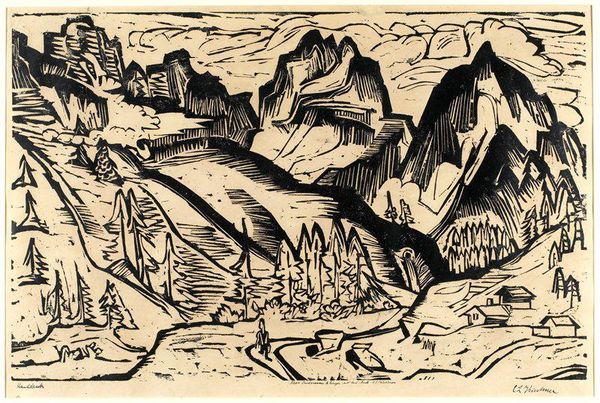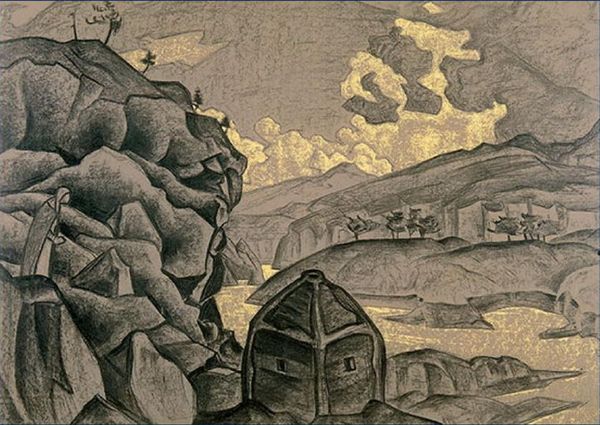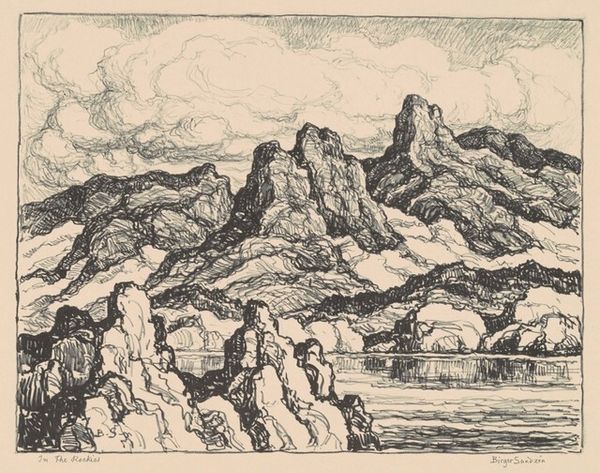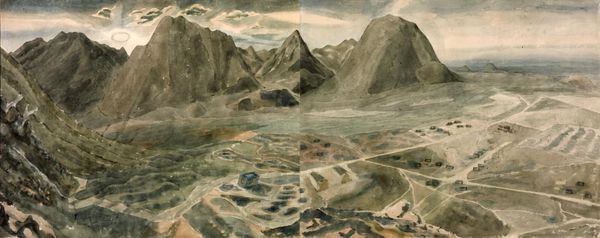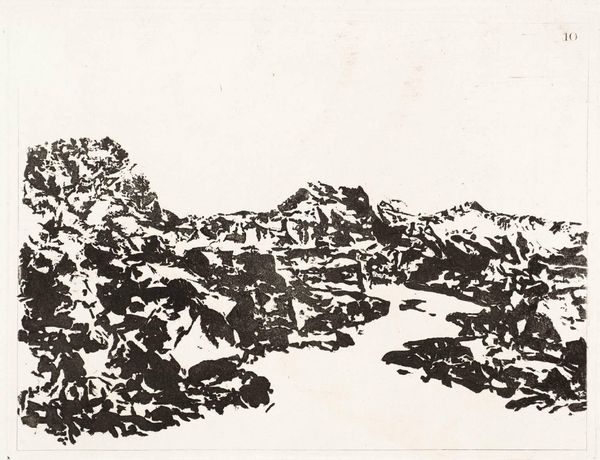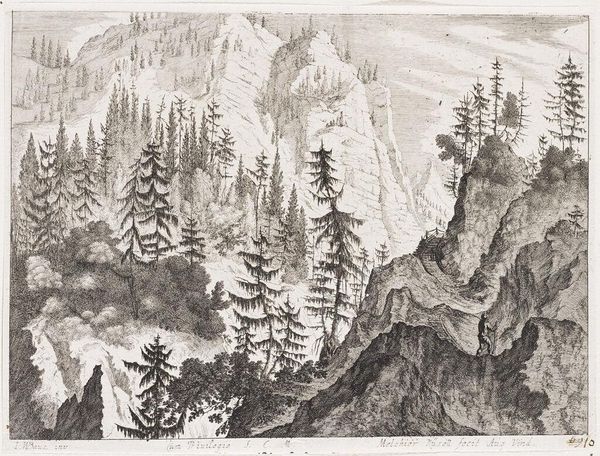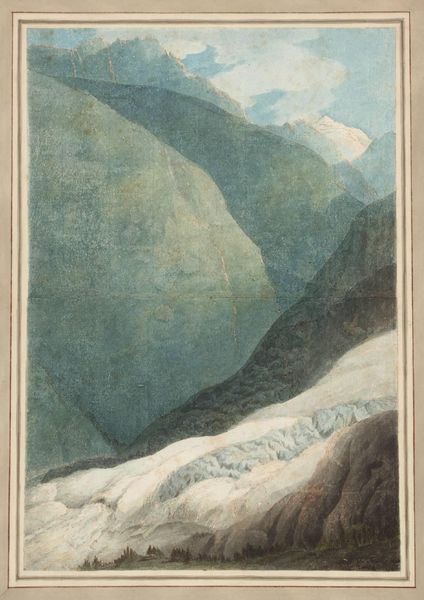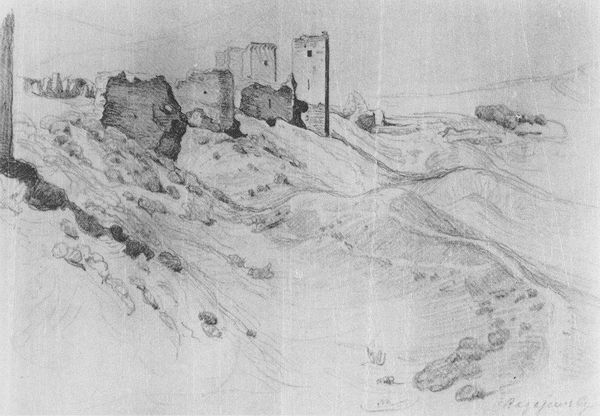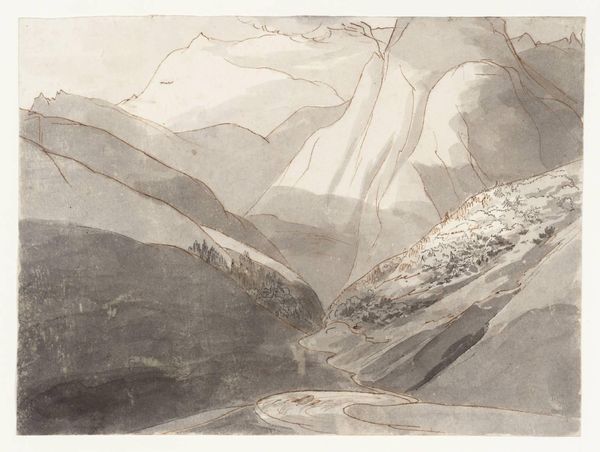
drawing, print, ink
#
drawing
#
allegories
#
symbol
# print
#
pen sketch
#
pencil sketch
#
landscape
#
etching
#
ink
#
mountain
#
symbolism
Dimensions: 115 x 195 cm
Copyright: Public domain
Editor: This is Nicholas Roerich’s “Boundary of Kingdoms” from 1916, a print in ink, seemingly destroyed now, sadly. The mountain range dominates the scene, with tiny figures at the lower left, cloaked and carrying something circular. There's a sense of scale, an imposing vastness that makes you feel quite small. What do you see in this piece, especially considering it was created during World War I? Curator: Well, that timing is critical. Roerich, while often labeled a mystic, was deeply concerned with cultural preservation. Looking at this print as a product of its time, "Boundary of Kingdoms" presents a fascinating commentary on the sociopolitical landscape of a world at war. Mountains often represent endurance, timelessness. The robed figures appear to be holding some kind of shield or emblem. Editor: You're right, the mountains *do* feel timeless. And that emblem… Do you think it represents a specific nation, or something more symbolic? Curator: It's intentionally ambiguous, I believe. Roerich strived to represent universal values that transcended any single nation’s boundaries, highlighting, instead, common cultural roots and spiritual quests. Think of his involvement with the Roerich Pact later on – a treaty focused on the protection of artistic establishments, scientific institutions, and historical monuments. "Boundary of Kingdoms" is perhaps an earlier meditation on that same theme. What impact do you think destroying the work had on this meaning? Editor: Knowing it was destroyed definitely amplifies the sense of loss and fragility, doesn't it? It makes the work seem even more pertinent today. It is fascinating to me how an image can convey not just physical geography but also profound political and ethical messages. Curator: Exactly. By positioning this concern within the symbol of mountains, Roerich suggests their endurance, both real and desired. And to have this statement *itself* destroyed is profoundly impactful in the telling of this history. A true warning, in hindsight.
Comments
No comments
Be the first to comment and join the conversation on the ultimate creative platform.

